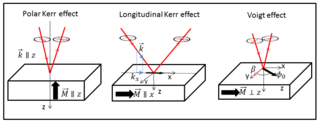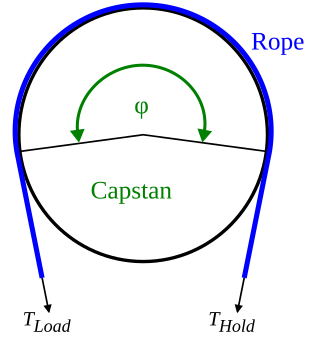#!/usr/bin/python3importloggingfromdatetimeimportdatetime,timedelta,timezone,tzinfofrommathimportacos,asin,ceil,cos,degrees,fmod,radians,sin,sqrtfromtimeimporttimelog=logging.getLogger()def_ts2human(ts:int|float,debugtz:tzinfo|None)->str:returnstr(datetime.fromtimestamp(ts,debugtz))defj2ts(j:float|int)->float:return(j-2440587.5)*86400defts2j(ts:float|int)->float:returnts/86400.0+2440587.5def_j2human(j:float|int,debugtz:tzinfo|None)->str:ts=j2ts(j)returnf'{ts} = {_ts2human(ts,debugtz)}'def_deg2human(deg:float|int)->str:x=int(deg*3600.0)num=f'∠{deg:.3f}°'rad=f'∠{radians(deg):.3f}rad'human=f'∠{x//3600}°{x//60%60}′{x%60}″'returnf'{rad} = {human} = {num}'defcalc(current_timestamp:float,f:float,l_w:float,elevation:float=0.0,*,debugtz:tzinfo|None=None,)->tuple[float,float,None]|tuple[None,None,bool]:log.debug(f'Latitude f = {_deg2human(f)}')log.debug(f'Longitude l_w = {_deg2human(l_w)}')log.debug(f'Now ts = {_ts2human(current_timestamp,debugtz)}')J_date=ts2j(current_timestamp)log.debug(f'Julian date j_date = {J_date:.3f} days')# Julian day# TODO: ceil ?n=ceil(J_date-(2451545.0+0.0009)+69.184/86400.0)log.debug(f'Julian day n = {n:.3f} days')# Mean solar timeJ_=n+0.0009-l_w/360.0log.debug(f'Mean solar time J_ = {J_:.9f} days')# Solar mean anomaly# M_degrees = 357.5291 + 0.98560028 * J_ # Same, but looks uglyM_degrees=fmod(357.5291+0.98560028*J_,360)M_radians=radians(M_degrees)log.debug(f'Solar mean anomaly M = {_deg2human(M_degrees)}')# Equation of the centerC_degrees=1.9148*sin(M_radians)+0.02*sin(2*M_radians)+0.0003*sin(3*M_radians)# The difference for final program result is few milliseconds# https://www.astrouw.edu.pl/~jskowron/pracownia/praca/sunspot_answerbook_expl/expl-4.html# e = 0.01671# C_degrees = \# degrees(2 * e - (1 / 4) * e ** 3 + (5 / 96) * e ** 5) * sin(M_radians) \# + degrees(5 / 4 * e ** 2 - (11 / 24) * e ** 4 + (17 / 192) * e ** 6) * sin(2 * M_radians) \# + degrees(13 / 12 * e ** 3 - (43 / 64) * e ** 5) * sin(3 * M_radians) \# + degrees((103 / 96) * e ** 4 - (451 / 480) * e ** 6) * sin(4 * M_radians) \# + degrees((1097 / 960) * e ** 5) * sin(5 * M_radians) \# + degrees((1223 / 960) * e ** 6) * sin(6 * M_radians)log.debug(f'Equation of the center C = {_deg2human(C_degrees)}')# Ecliptic longitude# L_degrees = M_degrees + C_degrees + 180.0 + 102.9372 # Same, but looks uglyL_degrees=fmod(M_degrees+C_degrees+180.0+102.9372,360)log.debug(f'Ecliptic longitude L = {_deg2human(L_degrees)}')Lambda_radians=radians(L_degrees)# Solar transit (julian date)J_transit=2451545.0+J_+0.0053*sin(M_radians)-0.0069*sin(2*Lambda_radians)log.debug(f'Solar transit time J_trans = {_j2human(J_transit,debugtz)}')# Declination of the Sunsin_d=sin(Lambda_radians)*sin(radians(23.4397))# cos_d = sqrt(1-sin_d**2) # exactly the same precision, but 1.5 times slowercos_d=cos(asin(sin_d))# Hour anglesome_cos=(sin(radians(-0.833-2.076*sqrt(elevation)/60.0))-sin(radians(f))*sin_d)/(cos(radians(f))*cos_d)try:w0_radians=acos(some_cos)exceptValueError:returnNone,None,some_cos>0.0w0_degrees=degrees(w0_radians)# 0...180log.debug(f'Hour angle w0 = {_deg2human(w0_degrees)}')j_rise=J_transit-w0_degrees/360j_set=J_transit+w0_degrees/360log.debug(f'Sunrise j_rise = {_j2human(j_rise,debugtz)}')log.debug(f'Sunset j_set = {_j2human(j_set,debugtz)}')log.debug(f'Day length {w0_degrees/(180/24):.3f} hours')returnj2ts(j_rise),j2ts(j_set),Nonedefmain():logging.basicConfig(level=logging.DEBUG)latitude=33.00801longitude=35.08794elevation=0print(calc(time(),latitude,longitude,elevation,debugtz=timezone(timedelta(hours=3),'fake-zone')))if__name__=='__main__':main()














































